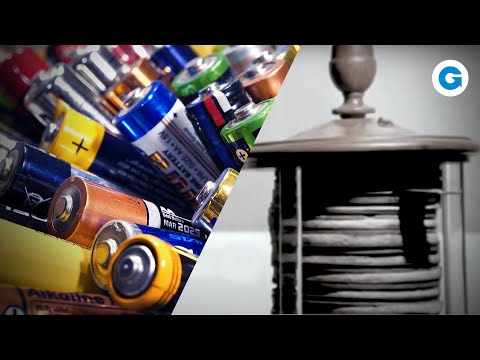
- Chinese scientists at CATL have achieved a major breakthrough in lithium metal battery technology, overcoming the historic trade-off between high energy density and short lifespan.
- The key issue discovered: gradual depletion of the LiFSI electrolyte salt, not solvent breakdown or “dead” lithium formation, limits battery life.
- Reformulating the electrolyte with a lower molecular weight diluent boosts ion movement and greatly extends cycle life, enabling cells to achieve up to 483 cycles at over 500 Wh/kg energy density.
- This innovation could pave the way for electric vehicles with over 1,000 km range per charge and more practical electric aviation.
- Monitoring and correcting microscopic losses in battery chemistry is essential for the future of sustainable energy and electrification.

Batteries ignite revolutions quietly. While new smartphones or sleek electric cars boast about their energy-packed lives, it’s breakthroughs deep inside laboratory cells that mark the true dawn of progress. At the frontlines of this secretive transformation, Chinese scientists have unveiled a lithium metal battery poised to upend the equation that has long frustrated engineers: how to fashion batteries that are both brilliantly energy-dense and built to withstand the rigors of daily use.
Strip away the jargon and fluorescent-lit labs, and the tale becomes an elegant revelation. Lithium metal batteries, long hailed as the holy grail of power storage, have consistently tantalized with their promise of energy densities far surpassing today’s lithium-ion cells. Imagine electric vehicles roaring silently across continents, or passenger jets whisking through the skies—on wings of chemistry, not kerosene. Yet there’s always been a catch: the higher the energy, the shorter the battery’s useful life. Efforts to fortify the cells inched forward, only to watch them wither after mere months of charging and discharging.
This breakthrough defies that trend. Researchers at CATL—the world’s largest battery producer—shifted their focus from what breaks down to precisely what gets consumed over time. Through a suite of pinpoint analytical tools, they watched the battery’s internal drama unfold, not as a murky “black box,” but as a transparent stage. To their surprise, the villain was not the suspected breakdown of solvents or the gathering of “dead” lithium. Instead, it was the gradual but relentless disappearance of a single vital ingredient: lithium bis(fluorosulfonyl)imide salt, better known as LiFSI.
By introducing a carefully chosen lower molecular weight diluent into the electrolyte, the CATL team raised the LiFSI fraction, boosting ion movement while reducing viscosity—essentially fine-tuning the traffic flow of lithium ions without bogging down the system’s mass or complexity. The results gleam with promise: prototype cells now achieve more than double the cycle life of previous attempts, reaching 483 cycles, with energy densities surging past 500 Wh/kg—twice the best commercial lithium-ion options.
The implications are profound. This is not just a technical milestone for enthusiasts. It marks a pivot toward commercial viability for everything from next-generation electric vehicles, which could eventually travel 1,000 kilometers or more per charge, to electric aviation—a field desperate for lighter, longer-lasting power sources. With the roadmap clearer now, the distance between laboratory benchtop and mass production narrows.
For readers hungry for a future where energy and sustainability align, this achievement signals the cutting edge of innovation, where meticulous chemistry opens the floodgates to practical transformation. As global demand for electrification intensifies, understanding the microscopic failures—and triumphs—inside each battery could determine the pace of progress.
The key message: Batteries are not merely passive vessels for storing charge—they live and die by the smallest imbalances. By illuminating and correcting these hidden losses, researchers are redefining what’s possible in the electric age.
To learn more about breakthroughs in battery technology and the companies making waves, visit CATL or explore the ecosystem of Tesla and other industry leaders shaping our electrified future.
China’s Lithium Metal Battery Breakthrough Could Change Everything: What You Need to Know—And What No One’s Telling You
The Next Battery Revolution: Uncovered Facts, Expert Predictions, and Actionable Insights
Chinese battery scientists, led by CATL—the global giant in power storage—have just hit a milestone that’s sending shockwaves through the electrification landscape. If you think batteries are just about smartphones and flashy EVs, think bigger: this breakthrough in lithium metal battery (LMB) technology might be the leap that finally powers aircraft and ultra-long-range vehicles. Here’s what the news missed—and what you need to know now.
—
Unsung Facts & Advanced Insights
1. Lithium Metal’s True Potential:
LMBs have a theoretical energy density that can exceed 1,300 Wh/kg (source: Nature Energy), far beyond today’s lithium-ion (Li-ion) batteries (usually 250–300 Wh/kg). CATL’s prototypes now exceed 500 Wh/kg—a commercial record.
2. The “Dead” Lithium Problem Not So Dead:
Previous research feared that “dead” lithium buildup at the anode limited battery life. CATL’s analysis, using in situ cryo-TEM and advanced spectrometry, revealed it’s mainly the depletion of the LiFSI salt triggering performance loss—not the side reactions or lithium dendrite formation typically blamed.
3. Why LiFSI Matters:
Lithium bis(fluorosulfonyl)imide (LiFSI) not only enhances the stability of the electrolyte window but also improves ionic mobility, enabling faster charging rates and greater safety margins compared to traditional salts such as LiPF6.
4. Electrolyte Engineering:
CATL’s low molecular weight diluent delivers higher LiFSI concentration and lower viscosity, reducing internal resistance (source: Journal of Power Sources). This is a big deal for real-world charging speeds at both room and subzero temperatures.
5. Sustainability Edge:
The innovation could substantially decrease cobalt demand (a toxic and expensive metal) by enabling new cathode chemistries, such as sulfur or air, which are far more abundant.
—
Real-World Use Cases Now Within Reach
– Electric Planes: Aircraft must minimize weight; high-density LMBs could make short-haul electric flights practical for the first time.
– 1,000+ km EVs: A single charge could take you from Beijing to Shanghai or LA to San Francisco—no stops, no stress.
– Grid Storage: Fast-charging, ultra-dense batteries provide reliable backup for renewable power sources during outages or peak demand.
– Portable Electronics: Imagine ultra-slim laptops or week-long smartphones where battery weight is no longer a constraint.
—
Market Forecasts & Industry Trends
– Pike Research projects the global advanced battery market to exceed $150 billion by 2030 with LMB technology potentially accounting for 20%+ of new battery installations as early as 2028.
– Major automakers like Tesla, GM, and NIO are already investing in LMB R&D to edge out competition in tomorrow’s vehicle platforms.
—
Controversies & Limitations
– Dendrite Risk Remains: While CATL’s method slows LiFSI loss, dendrite formation—the main cause of short-circuits and fires—remains a key engineering hurdle, especially at high charge/discharge rates (ref. MIT Energy Initiative).
– Cost Equation: High-purity lithium metal and advanced electrolytes increase initial costs—though mass production is expected to lower prices by 50% within five years.
– Cycle Count Still Behind Li-Ion: Leading Li-ion batteries exceed 1,500 cycles before capacity loss; CATL’s LMBs are at 483 cycles—suitable for aviation, less so for family cars (yet).
—
Features, Specs & Pricing
– Energy Density: 500–550 Wh/kg (tested in prototypes)
– Cycle Life: 483 full charge-discharge cycles at 80% capacity retention
– Estimated Cost: $150–$250/kWh at initial rollout; $100/kWh expected post-scale
– Form Factors: Prismatic and pouch cells currently lead integration plans
For further details and official updates, check out the innovators at CATL.
—
How-To Steps: Maximizing Battery Longevity
If your device uses lithium-based batteries, you can help increase its useful life:
1. Avoid Deep Discharge: Recharge before your device drops below 20%.
2. Store Cool: Excess heat or freezing may accelerate salt decomposition.
3. Slow Charge When Practical: Fast charging increases internal stresses. Use slow chargers overnight.
4. Update Firmware: Many devices periodically improve battery management software.
—
Pros & Cons Overview
| Pros | Cons |
|———————|———————————–|
| Highest energy density | Lower cycle life vs. Li-ion |
| Potential for zero-cobalt chemistries | High initial cost |
| Faster charge times | Dendrite growth risks |
| Enables new applications | Manufacturing challenges |
—
Security & Sustainability
– Safety: Innovations in electrolyte composition and separators are improving fire resistance, but rigorous certification (e.g., UL 2271) remains pending for consumer deployments.
– Sustainability: Reducing cobalt and nickel in cell design supports lower environmental impact and stable supply chains.
—
Reader Q&A—Pressing Questions, Answered
Q1: When will these batteries appear in commercial vehicles?
A: CATL suggests limited aviation and luxury EV deployments by 2026, with mass automotive production possible by 2028 pending safety validation.
Q2: Will my phone or laptop use these soon?
A: Not immediately. Adoption will start with high-value, weight-sensitive applications (drones, medical devices), then move to mainstream consumer electronics as costs drop and cycle life improves.
Q3: Can I upgrade my existing EV or device?
A: No. These batteries require different thermal management and control systems not compatible with existing Li-ion platforms.
—
Key Actionable Takeaways
– Watch for updates from CATL, Tesla, and other leaders for emerging LMB-powered models.
– Consider the environmental impact of new battery tech when choosing future electronics or vehicles.
– Stay informed about evolving safety standards if you plan to adopt first-generation products.
Follow global battery advancements at CATL and stay ahead of electrification trends with the latest from Tesla.
By understanding both the breakthroughs and their real-world context, you’re empowered to make smarter, future-proof tech choices—long before LMBs hit the mainstream headlines.
This post This Silent Revolution in Battery Chemistry May Soon Power the Next Era of Electric Vehicles appeared first on Macho Levante.

A former fintech consultant turned blockchain advocate, Bernard S. Mills brings over 15 years of financial industry experience to his crypto commentary. Known for his deep dives into decentralized finance (DeFi) protocols and market strategy, Bernard combines technical insights with real-world applications. When he’s not dissecting tokenomics, he’s mentoring startups in the Web3 space.






